CometBFT QA Results v0.34.x
v0.34.x - From Tendermint Core to CometBFT
This section reports on the QA process we followed before releasing the first v0.34.x version
from our CometBFT repository.
The changes with respect to the last version of v0.34.x
(namely v0.34.26, released from the Informal Systems’ Tendermint Core fork)
are minimal, and focus on rebranding our fork of Tendermint Core to CometBFT at places
where there is no substantial risk of breaking compatibility
with earlier Tendermint Core versions of v0.34.x.
Indeed, CometBFT versions of v0.34.x (v0.34.27 and subsequent) should fulfill
the following compatibility-related requirements.
- Operators can easily upgrade a
v0.34.xversion of Tendermint Core to CometBFT. - Upgrades from Tendermint Core to CometBFT can be uncoordinated for versions of the
v0.34.xbranch. - Nodes running CometBFT must be interoperable with those running Tendermint Core in the same chain,
as long as all are running a
v0.34.xversion.
These QA tests focus on the third bullet, whereas the first two bullets are tested using our e2e tests.
It would be prohibitively time consuming to test mixed networks of all combinations of existing v0.34.x
versions, combined with the CometBFT release candidate under test.
Therefore our testing focuses on the last Tendermint Core version (v0.34.26) and the CometBFT release
candidate under test.
We run the 200 node test, but not the rotating node test. The effort of running the latter
is not justified given the amount and nature of the changes we are testing with respect to the
full QA cycle run previously on v0.34.x.
Since the changes to the system’s logic are minimal, we are interested in these performance requirements:
- The CometBFT release candidate under test performs similarly to Tendermint Core (i.e., the baseline)
- when used at scale (i.e., in a large network of CometBFT nodes)
- when used at scale in a mixed network (i.e., some nodes are running CometBFT and others are running an older Tendermint Core version)
Therefore we carry out a complete run of the 200-node test on the following networks:
- A homogeneous 200-node testnet, where all nodes are running the CometBFT release candidate under test.
- A mixed network where 1/2 (99 out of 200) of the nodes are running the CometBFT release candidate under test,
and the rest (101 out of 200) are running Tendermint Core
v0.34.26. - A mixed network where 1/3 (66 out of 200) of the nodes are running the CometBFT release candidate under test,
and the rest (134 out of 200) are running Tendermint Core
v0.34.26. - A mixed network where 2/3 (133 out of 200) of the nodes are running the CometBFT release candidate under test,
and the rest (67 out of 200) are running Tendermint Core
v0.34.26.
Configuration and Results
In the following sections we provide the results of the 200 node test. Each section reports the baseline results (for reference), the homogeneous network scenario (all CometBFT nodes), and the mixed networks with 1/2, 1/3 and 2/3 of Tendermint Core nodes.
Saturation Point
As the CometBFT release candidate under test has minimal changes
with respect to Tendermint Core v0.34.26, other than the rebranding changes,
we can confidently reuse the results from the v0.34.x baseline test regarding
the saturation point.
Therefore, we will simply use a load of (r=200,c=2)
(see the explanation here) on all experiments.
We also include the baseline results for quick reference and comparison.
Experiments
On each of the three networks, the test consists of 4 experiments, with the goal of ensuring the data obtained is consistent across experiments.
On each of the networks, we pick only one representative run to present and discuss the results.
Examining latencies
For each network the figures plot the four experiments carried out with the network. We can see that the latencies follow comparable patterns across all experiments.
Unique identifiers, UUID, for each execution are presented on top of each graph. We refer to these UUID to indicate to the representative runs.
CometBFT Homogeneous network
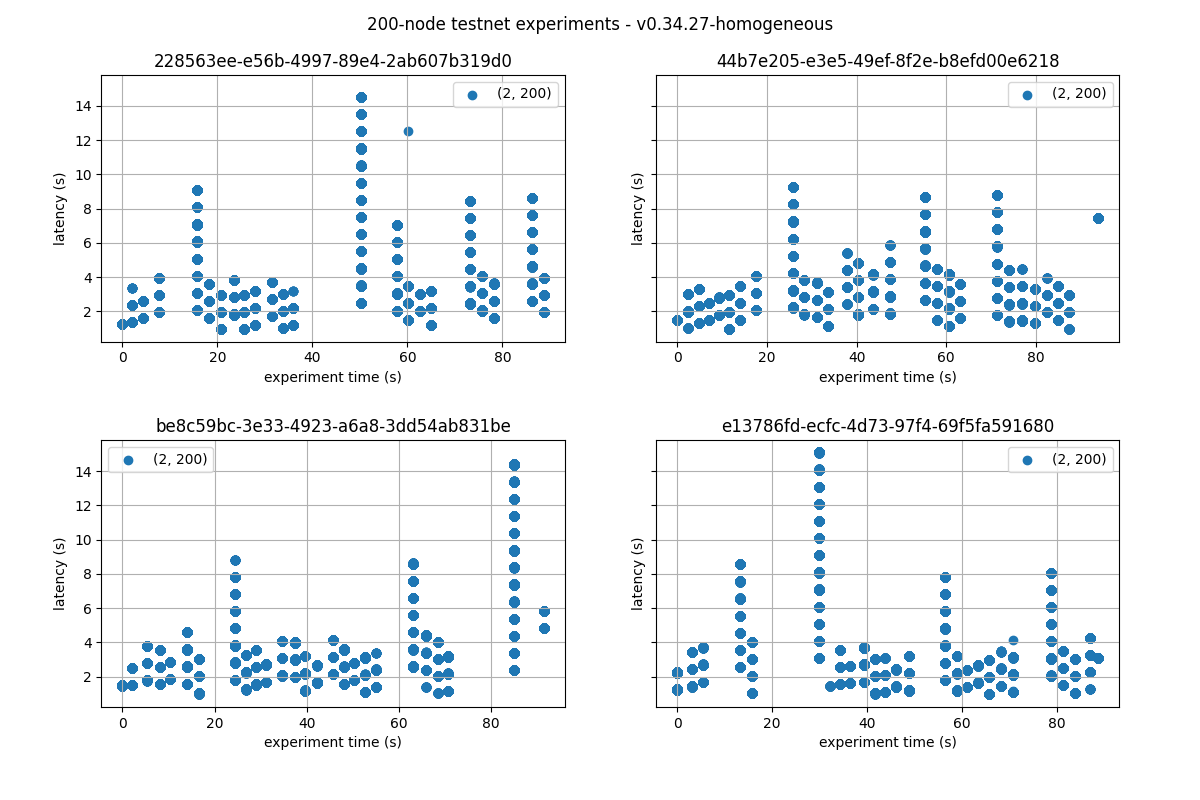
1/2 Tendermint Core - 1/2 CometBFT

1/3 Tendermint Core - 2/3 CometBFT

2/3 Tendermint Core - 1/3 CometBFT

Prometheus Metrics
This section reports on the key Prometheus metrics extracted from the following experiments.
- Baseline results:
v0.34.x, obtained in October 2022 and reported here. - CometBFT homogeneous network: experiment with UUID starting with
be8c. - Mixed network, 1/2 Tendermint Core
v0.34.26and 1/2 running CometBFT: experiment with UUID starting with04ee. - Mixed network, 1/3 Tendermint Core
v0.34.26and 2/3 running CometBFT: experiment with UUID starting withfc5e. - Mixed network, 2/3 Tendermint Core
v0.34.26and 1/3 running CometBFT: experiment with UUID starting with4759.
We make explicit comparisons between the baseline and the homogenous setups, but refrain from commenting on the mixed network experiment unless they show some exceptional results.
Mempool Size
For each reported experiment we show two graphs. The first shows the evolution over time of the cumulative number of transactions inside all full nodes’ mempools at a given time.
The second one shows the evolution of the average over all full nodes.
Baseline

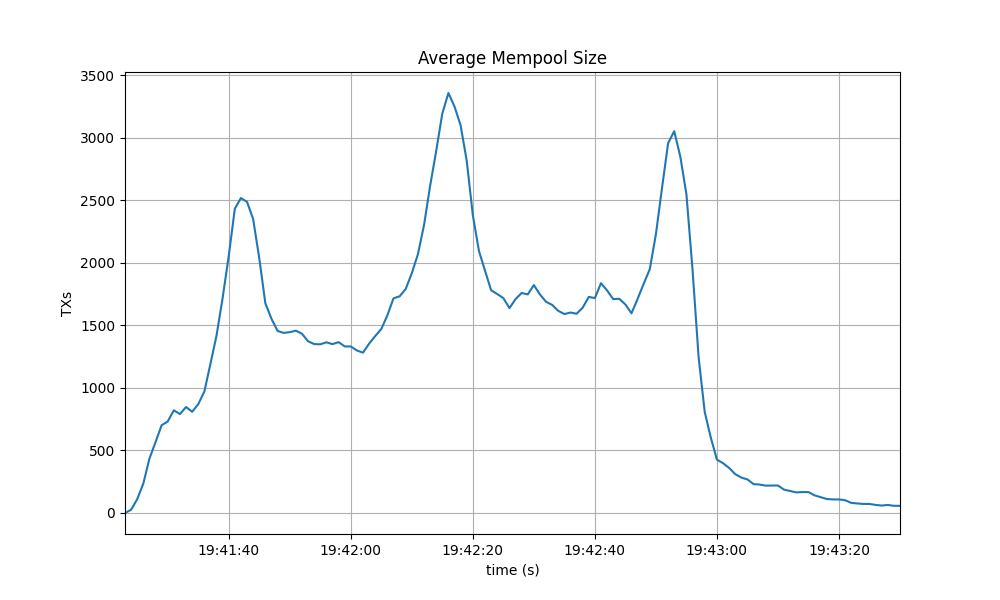
CometBFT Homogeneous network
The results for the homogeneous network and the baseline are similar in terms of outstanding transactions.
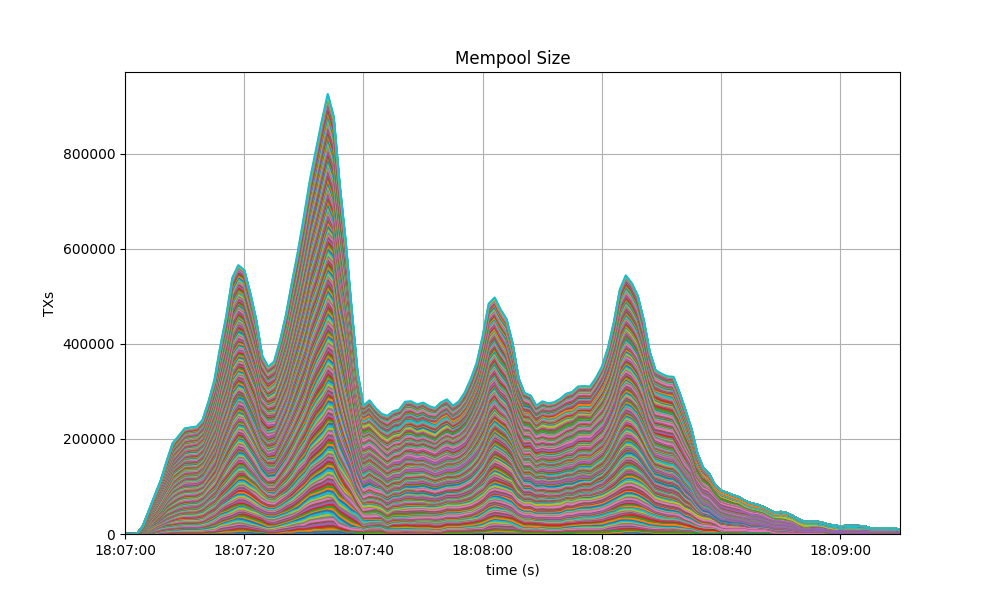

1/2 Tendermint Core - 1/2 CometBFT


1/3 Tendermint Core - 2/3 CometBFT


2/3 Tendermint Core - 1/3 CometBFT


Consensus Rounds per Height
The following graphs show the rounds needed to complete each height and agree on a block.
A value of 0 shows that only one round was required (with id 0), and a value of 1 shows that two rounds were required.
Baseline
We can see that round 1 is reached with a certain frequency.

CometBFT Homogeneous network
Most heights finished in round 0, some nodes needed to advance to round 1 at various moments, and a few nodes even needed to advance to round 2 at one point. This coincides with the time at which we observed the biggest peak in mempool size on the corresponding plot, shown above.
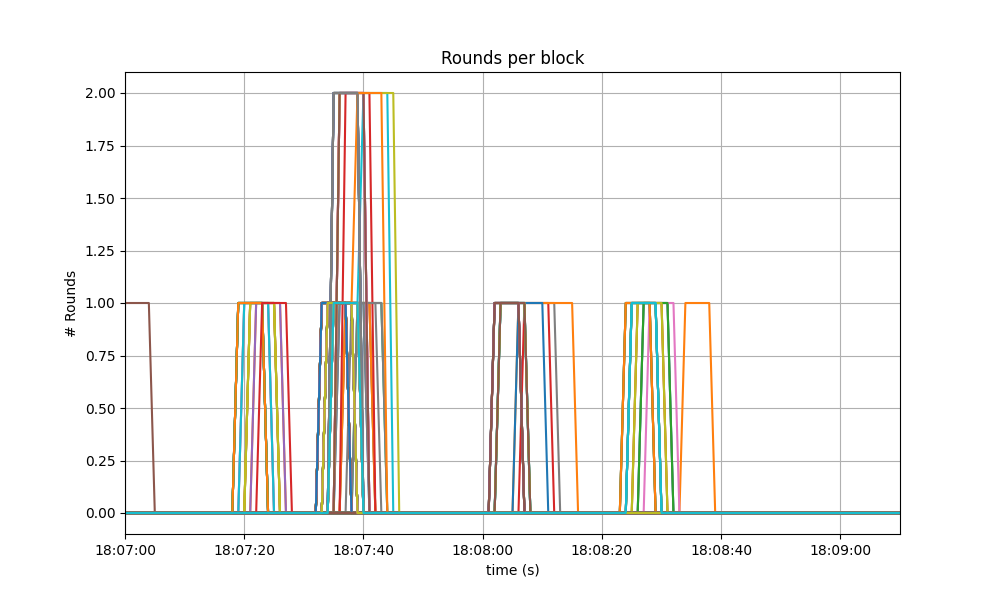
1/2 Tendermint Core - 1/2 CometBFT

1/3 Tendermint Core - 2/3 CometBFT

2/3 Tendermint Core - 1/3 CometBFT

Peers
The following plots show how many peers a node had throughtout the experiment.
The thick red dashed line represents the moving average over a sliding window of 20 seconds.
Baseline
The following graph shows the that the number of peers was stable throughout the experiment. Seed nodes typically have a higher number of peers. The fact that non-seed nodes reach more than 50 peers is due to #9548.

CometBFT Homogeneous network
The results for the homogeneous network are very similar to the baseline. The only difference being that the seed nodes seem to loose peers in the middle of the experiment. However this cannot be attributed to the differences in the code, which are mainly rebranding.

1/2 Tendermint Core - 1/2 CometBFT

1/3 Tendermint Core - 2/3 CometBFT

2/3 Tendermint Core - 1/3 CometBFT
As in the homogeneous case, there is some variation in the number of peers for some nodes. These, however, do not affect the average.

Blocks Produced per Minute, Transactions Processed per Minute
The following plot show the rate of block production and the rate of transactions delivered, throughout the experiments.
In both graphs, rates are calculated over a sliding window of 20 seconds. The thick red dashed line show the rates’ moving averages.
Baseline
The average number of blocks/minute oscilate between 10 and 40.
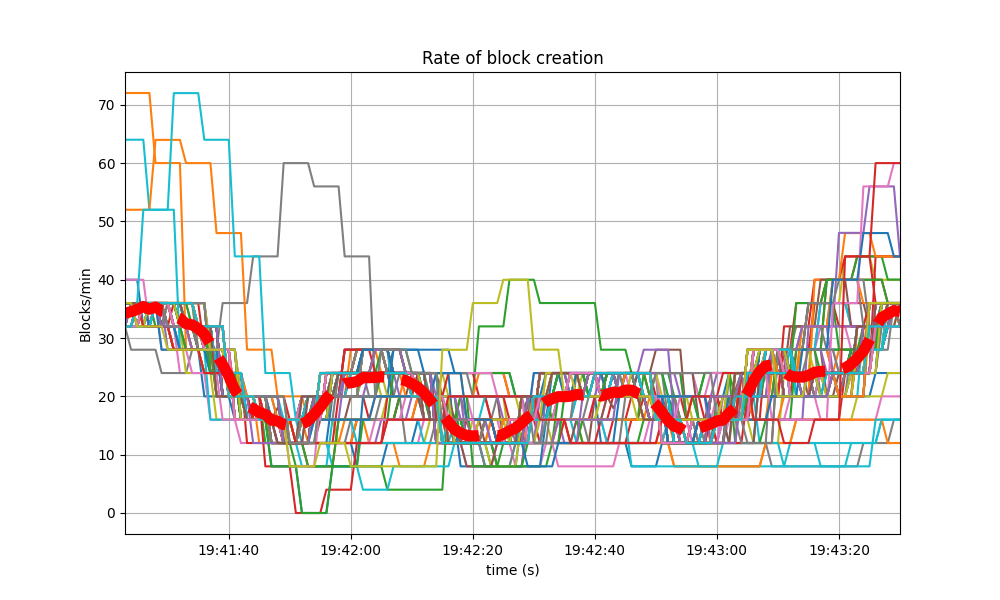
The number of transactions/minute tops around 30k.
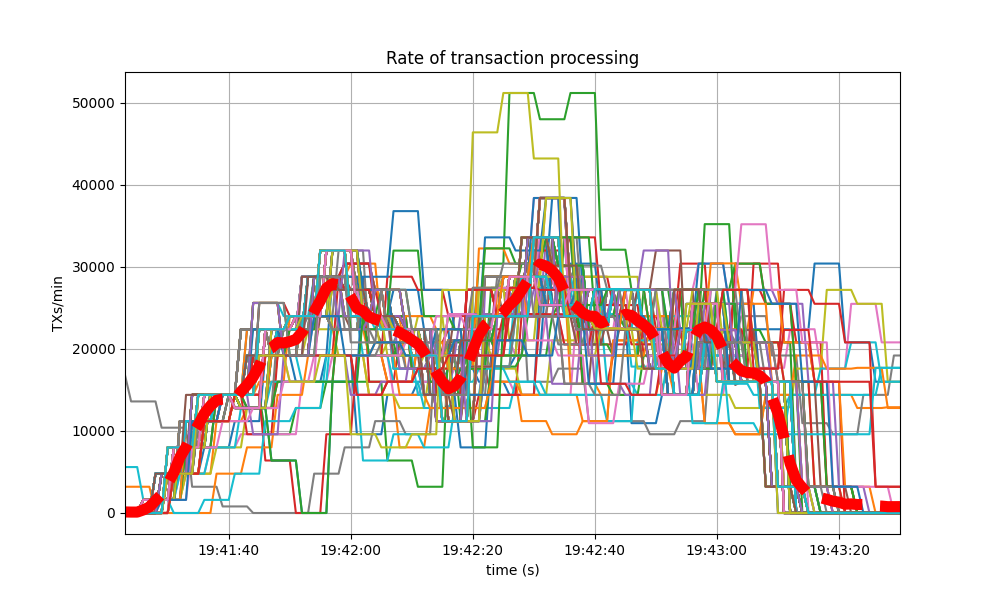
CometBFT Homogeneous network
The plot showing the block production rate shows that the rate oscillates around 20 blocks/minute, mostly within the same range as the baseline.

The plot showing the transaction rate shows the rate stays around 20000 transactions per minute, also topping around 30k.

1/2 Tendermint Core - 1/2 CometBFT


1/3 Tendermint Core - 2/3 CometBFT


2/3 Tendermint Core - 1/3 CometBFT


Memory Resident Set Size
The following graphs show the Resident Set Size (RSS) of all monitored processes and the average value.
Baseline

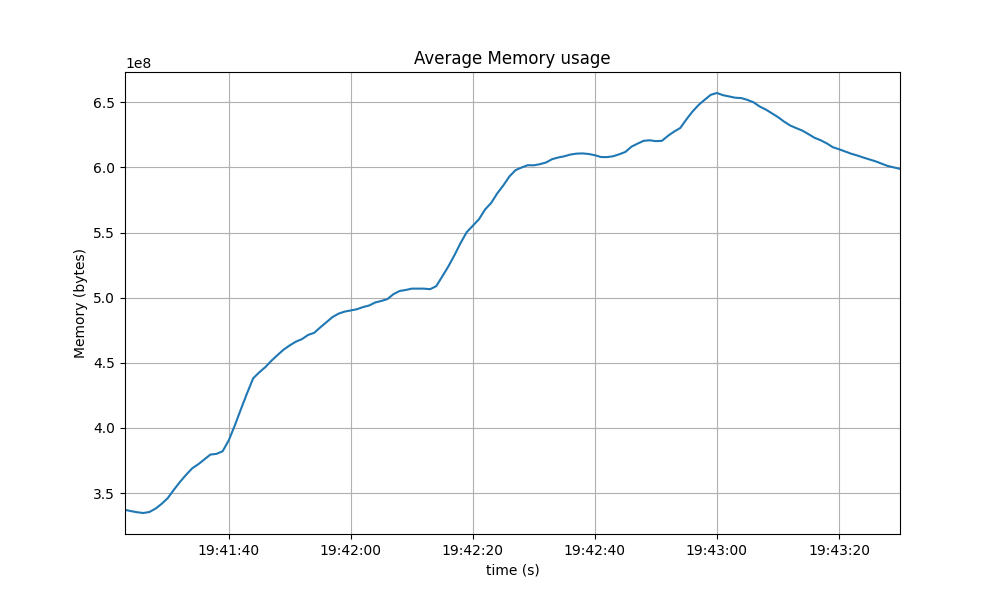
CometBFT Homogeneous network
This is the plot for the homogeneous network, which is slightly more stable than the baseline over the time of the experiment.

And this is the average plot. It oscillates around 560 MiB, which is noticeably lower than the baseline.

1/2 Tendermint Core - 1/2 CometBFT


1/3 Tendermint Core - 2/3 CometBFT


2/3 Tendermint Core - 1/3 CometBFT


CPU utilization
The following graphs show the load1 of nodes, as typically shown in the first line of the Unix top
command, and their average value.
Baseline

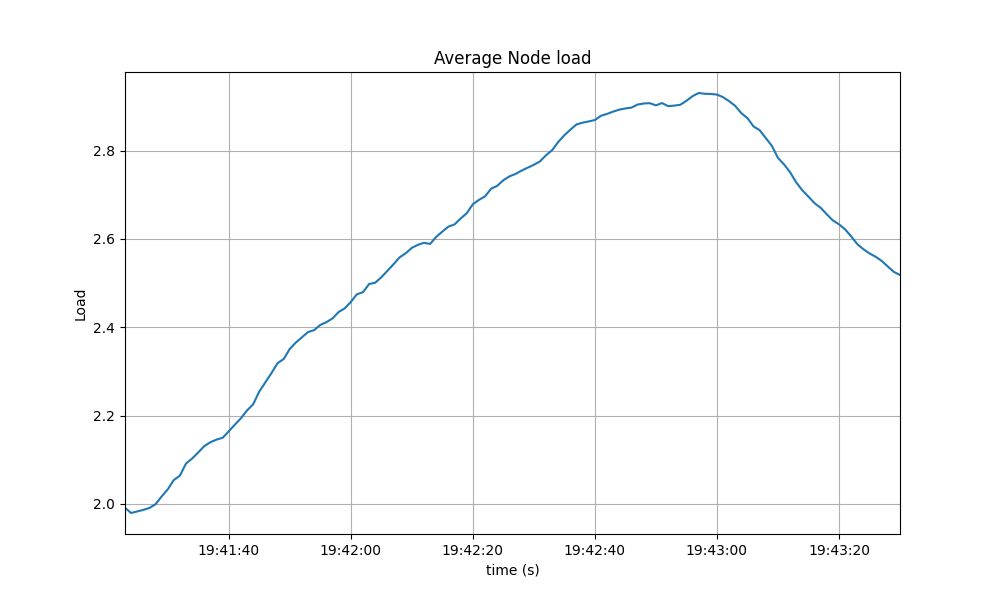
CometBFT Homogeneous network
The load in the homogenous network is, similarly to the baseline case, below 5 and, therefore, normal.

As expected, the average plot also looks similar.

1/2 Tendermint Core - 1/2 CometBFT


1/3 Tendermint Core - 2/3 CometBFT


2/3 Tendermint Core - 1/3 CometBFT


Test Results
The comparison of the baseline results and the homogeneous case show that both scenarios had similar numbers and are therefore equivalent.
The mixed nodes cases show that networks operate normally with a mix of compatible Tendermint Core and CometBFT versions. Although not the main goal, a comparison of metric numbers with the homogenous case and the baseline scenarios show similar results and therefore we can conclude that mixing compatible Tendermint Core and CometBFT introduces not performance degradation.
A conclusion of these tests is shown in the following table, along with the commit versions used in the experiments.
| Scenario | Date | Version | Result |
|---|---|---|---|
| CometBFT Homogeneous network | 2023-02-08 | 3b783434f26b0e87994e6a77c5411927aad9ce3f | Pass |
| 1/2 Tendermint Core 1/2 CometBFT |
2023-02-14 | CometBFT: 3b783434f26b0e87994e6a77c5411927aad9ce3f Tendermint Core: 66c2cb63416e66bff08e11f9088e21a0ed142790 |
Pass |
| 1/3 Tendermint Core 2/3 CometBFT |
2023-02-08 | CometBFT: 3b783434f26b0e87994e6a77c5411927aad9ce3f Tendermint Core: 66c2cb63416e66bff08e11f9088e21a0ed142790 |
Pass |
| 2/3 Tendermint Core 1/3 CometBFT |
2023-02-08 | CometBFT: 3b783434f26b0e87994e6a77c5411927aad9ce3f Tendermint Core: 66c2cb63416e66bff08e11f9088e21a0ed142790 |
Pass |
